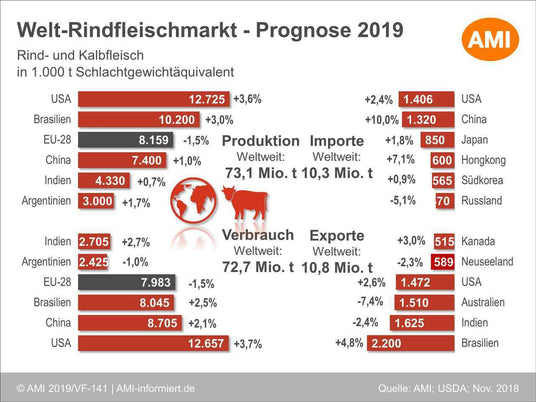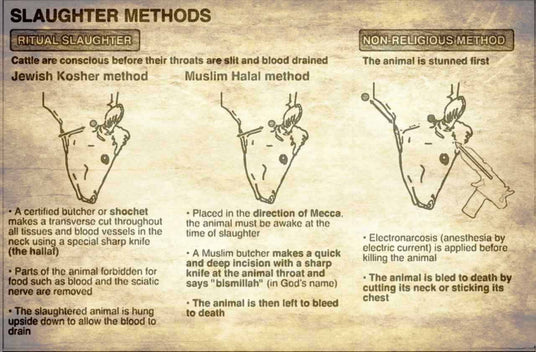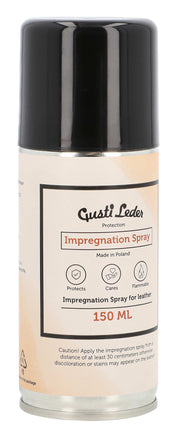
Does cattle slaughter really take place in India?
India is now one of the largest beef producers in the world . By comparison, the EU produces around 8 million tonnes of beef each year. In India, the figure is 4.3 million tonnes. Beef is therefore not just consumed in India, but is now also produced on a large scale. Most of India's slaughterhouses are in the south (Chennai) and the north (Uttar Pradesh and Kolkata). 50% of the meat exported to Qatar and Saudi Arabia comes from these locations. Why? The animals are slaughtered according to precise regulations rooted in Islam. Only if the meat is "halal" is it eaten in predominantly Islamic places like Qatar.

Slaughtering: The meaning of halal meat
The slaughter of healthy animals is religiously based in Islam and Judaism . Both the Koran and the Torah prohibit the consumption of carrion and blood. According to religious beliefs, the soul is found in the blood. Based on this, there is a rule that the animal should lose as much blood as possible during slaughter and the subsequent processing of the meat.
There are also precise regulations regarding the slaughter process. During slaughter, the carotid arteries, jugular veins, trachea, and esophagus of the living animal are severed with a single incision, usually without prior stunning . Because the spinal cord remains uninjured, muscular activity continues, and most of the blood is pumped out of the body. If carried out correctly, the animal will die within a few seconds, as the animal's suffering is intended to be kept as minimal as possible during this slaughter process.
After slaughter, the dead animal undergoes further processing . In Jewish ritual slaughter, the meat is washed and salted, and then inspected. This involves checking the meat and its organs for health, looking for diseases, tumors, and irregularities that would render the meat unclean. Only after successful processing is the meat considered "kosher" in Judaism , or "halal" in Islam , and suitable for consumption.
















































